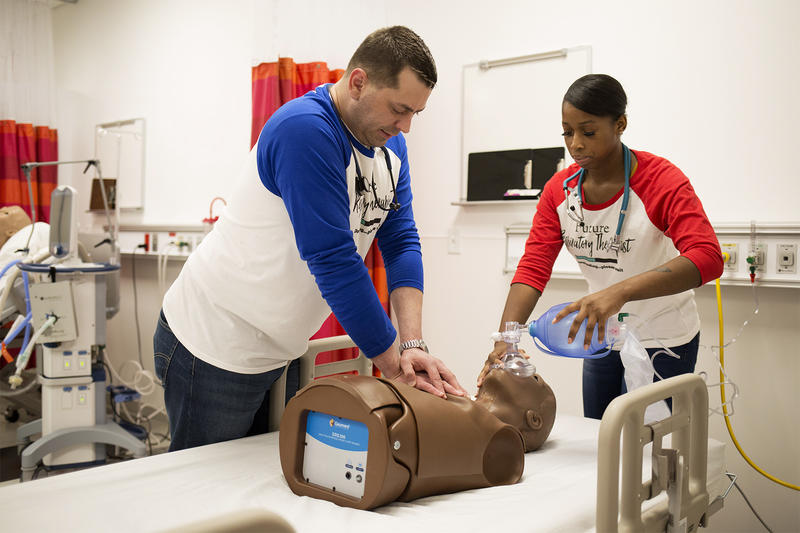Using Medical Simulation to Fill Healthcare Worker Shortage
Has your healthcare institution’s leadership expressed concern regarding the upcoming shortage of workforce available to the healthcare industry? In St. Louis last year there were 200 respiratory care therapist jobs left open, and over 2,000 nursing jobs! To combat this shortage, there is a dire need to increase the speed of education and training for specialized positions within healthcare, which of course is the perfect job for healthcare simulation. Corinne Ruff of St. Louis Public Radio recently covered a story about how St. Louis Community College is using medical simulation to combat their area’s Healthcare workforce shortage, which we have excerpt a short snippet of here:
Last year, there were nearly 200 job openings in St. Louis for respiratory care therapists — and 2,000 open nursing positions. St. Louis Community College is expanding and tailoring its programs to fill that need. This kind of response to a community’s workforce needs has long played a role in the community college model, but a new statewide push aims to make job training a bigger focus everywhere.
Since taking office, Gov. Mike Parson has focused heavily on jobs. Earlier this year, he went so far as to sign an executive order to merge the departments of higher education and workforce development. Zora Mulligan, Missouri’s higher education commissioner, helps lead the new department in Jefferson City. She said the change has helped broaden the state’s scope of job preparedness. Previously, she said the education department placed too much emphasis on four-year degree programs as the clear path to a well-paying job. So about a year ago, she helped launch an initiative called Talent for Tomorrow in order to better understand how the state’s workforce lines up with needs in the job market.
Sponsored Content:
“What we heard around the state and what the data will tell you is we need a much broader set of options, both to meet individual’s needs, but also to meet our workforce needs,” she said. Two data points in particular stick out to Mulligan — median wages and education levels across Missouri lag far behind other states. What that tells her is that just getting a job isn’t good enough; the key is to help people develop skills that will prepare them for better jobs. Mulligan said part of the solution is bringing more affordable and flexible educational programs into job centers. “The reality is without some post-secondary training, those people are likely to be repeat customers, and not the kind of repeat customer you want,” she said.
“We really want to get people on a track to training that gets them into a better job and then a little more training and a little better job.” Mulligan said cost is often the biggest hurdle for people seeking secondary education. That’s why she’s also helping spearhead a new financial aid program called Fast Track. It has $10 million in grant money budgeted this year to cover the cost of schooling for adults over the age of 25. So far, more than 500 people have applied for the funding, which can go toward a certificate, industry credential or a bachelor’s degree for in-demand fields like teaching, trades or STEM.
In St. Louis, the health care worker shortage is one of the most pressing workforce needs. St. Louis Community College Health Sciences Dean William Hubble said he’s never seen greater demand in his 40 years in the field. “This is a time where we have an aging population, we have an aging workforce, and the need for health care professionals is probably the highest I’ve ever seen it,” he said. Part of the solution, he said, is to make it easier for people to see long-term careers in health care. That’s why over the next five years, the college will expand its nursing program by 75%.
The other focus is on upskilling workers in the industry. As hospitals compete for qualified talent, many are left to take on entry-level employees who don’t have prior experience in health care. That makes job training critical. St. Louis Community College is partnering with hospital systems like BJC HealthCare on tailored curriculum. Incoming patient-care technicians, for instance, are paid to complete a 10-week training program.
Sponsored Content:
Shaquita Banks, a senior talent acquisition specialist at BJC, said these new programs have helped retain more employees than previous internal programs. She said filling the workforce gap is a long-term problem, but investments up front in an employee may encourage them to move up to higher roles. “I do think it will be very beneficial to really invest in our people to create that pipeline so that hopefully we can meet our needs.”
Read and Listen to the Full Public Radio Story Here!
Photo Credit: Carolina Hidalgo | St. Louis Public Radio. Respiratory care students Harry Painter Jr. and Darielle Griffin work with a mannequin to get hands-on training at St. Louis Community College’s new health care facility on the Forest Park campus.
Sponsored Content:

















